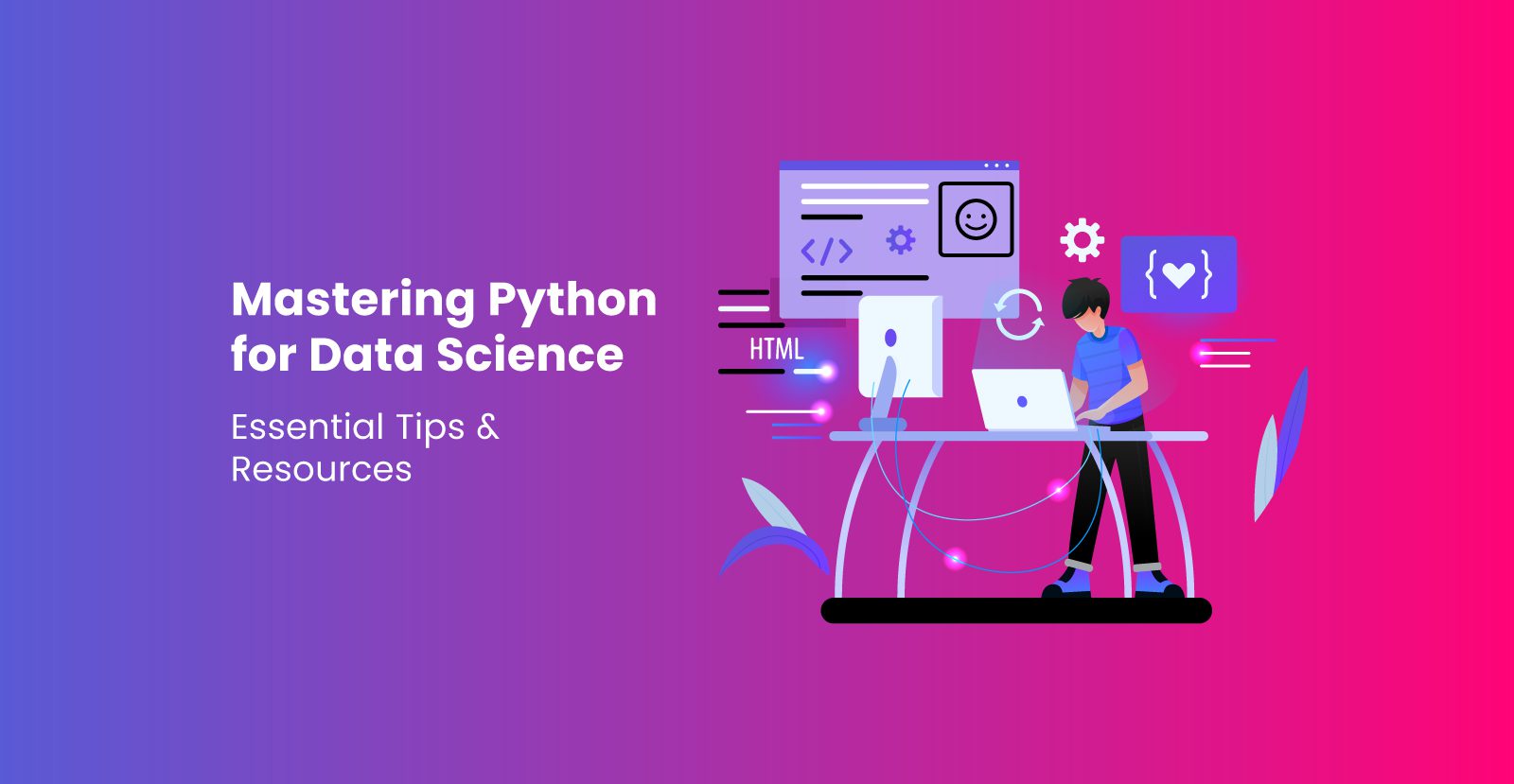Welcome to the fascinating world of data science, where Python has emerged as the go-to programming language for professionals and enthusiasts alike. Python’s versatility, readability, and extensive libraries make it an ideal choice for data analysis, machine learning, and visualization. In this blog post, we’ll explore essential tips and resources to help you master Python for data science. So, sit back, and let’s dive in!
1. Why Python for Data Science?
Python’s popularity in the data science community can be attributed to its simplicity, scalability, and robust ecosystem. Its intuitive syntax allows for faster development and readability, making it easier to collaborate and maintain code. Furthermore, Python offers a rich collection of libraries such as NumPy, Pandas, and Matplotlib, which provide powerful tools for data manipulation, analysis, and visualization.
2. Setting up the Python Environment:
To start your data science journey with Python, you’ll need to set up a suitable development environment. Begin by installing Anaconda, a distribution that includes Python, essential libraries, and a convenient package manager. Anaconda also provides Jupyter Notebook, an interactive coding environment perfect for data exploration and experimentation.
3. Python Fundamentals:
Before delving into data science-specific libraries, it’s crucial to grasp the fundamentals of Python programming. Familiarize yourself with concepts like variables, data types, control flow, loops, and functions. Websites like Codecademy, DataCamp, and Coursera offer beginner-friendly Python courses and tutorials to help you get started.
4. NumPy: Numerical Computing in Python:
NumPy is a fundamental library for numerical computing in Python. It provides efficient storage and manipulation of multi-dimensional arrays, essential for data manipulation and mathematical operations. Learning NumPy will enable you to handle large datasets efficiently and perform complex computations effortlessly.
5. Pandas: Data Manipulation and Analysis:
Pandas is a powerful library built on top of NumPy, specifically designed for data manipulation and analysis. It introduces the DataFrame, a tabular data structure resembling a spreadsheet, enabling you to slice, filter, aggregate, and transform data effortlessly. Mastering Pandas is crucial for cleaning and preprocessing data before diving into advanced analysis.
6. Matplotlib and Seaborn: Data Visualization:
Data visualization is a crucial aspect of data science, as it helps communicate insights effectively. Matplotlib and Seaborn are popular libraries for creating stunning visualizations in Python. Matplotlib provides a flexible and customizable interface, while Seaborn offers higher-level functions and aesthetically pleasing statistical plots. Understanding these libraries will enable you to create captivating visual representations of your data.
7. Scikit-Learn: Machine Learning Made Easy:
Scikit-Learn is a comprehensive machine learning library that simplifies the implementation of various algorithms. From linear regression to support vector machines and random forests, Scikit-Learn provides a unified interface and extensive documentation. Familiarize yourself with the library’s APIs, learn how to preprocess data, train models, and evaluate their performance.
8. Deep Learning with TensorFlow and Keras:
Deep learning has revolutionized the field of artificial intelligence, and Python provides excellent frameworks to leverage its power. TensorFlow and Keras are widely used libraries for building, training, and deploying deep learning models. TensorFlow offers a lower-level API for advanced customization, while Keras provides a user-friendly high-level interface. Explore these libraries to harness the potential of deep neural networks.
9. Resources for Continuous Learning:
The data science field is constantly evolving, and continuous learning is essential for staying up to date. Here are some valuable resources to further enhance your Python and data science skills:
– Online courses: Platforms like eduJournal offer a wide range of data science courses, covering Python, machine learning, Tableau, and more.
– Books: “Python for Data Analysis” by Wes McKinney, the creator of Pandas, is a must-read for any aspiring data scientist.
– Online communities: Engage with the data science community through platforms like Kaggle, Stack Overflow, and Reddit. Participate in discussions, share your projects, and seek guidance from experienced professionals.
– Data science blogs: Follow influential blogs such as eduJournal’s Blog, KDnuggets, and DataCamp’s blog for insightful articles and tutorials.
Conclusion:
Congratulations on embarking on your Python data science journey! By mastering Python and its associated libraries, you’ll have the necessary skills to tackle real-world data challenges. Remember to practice regularly, explore diverse datasets, and be part of the vibrant data science community. With dedication and perseverance, you’ll become a proficient data scientist, leveraging the power of Python to derive valuable insights and make data-driven decisions.
Happy coding and data exploring!



Please enter input field